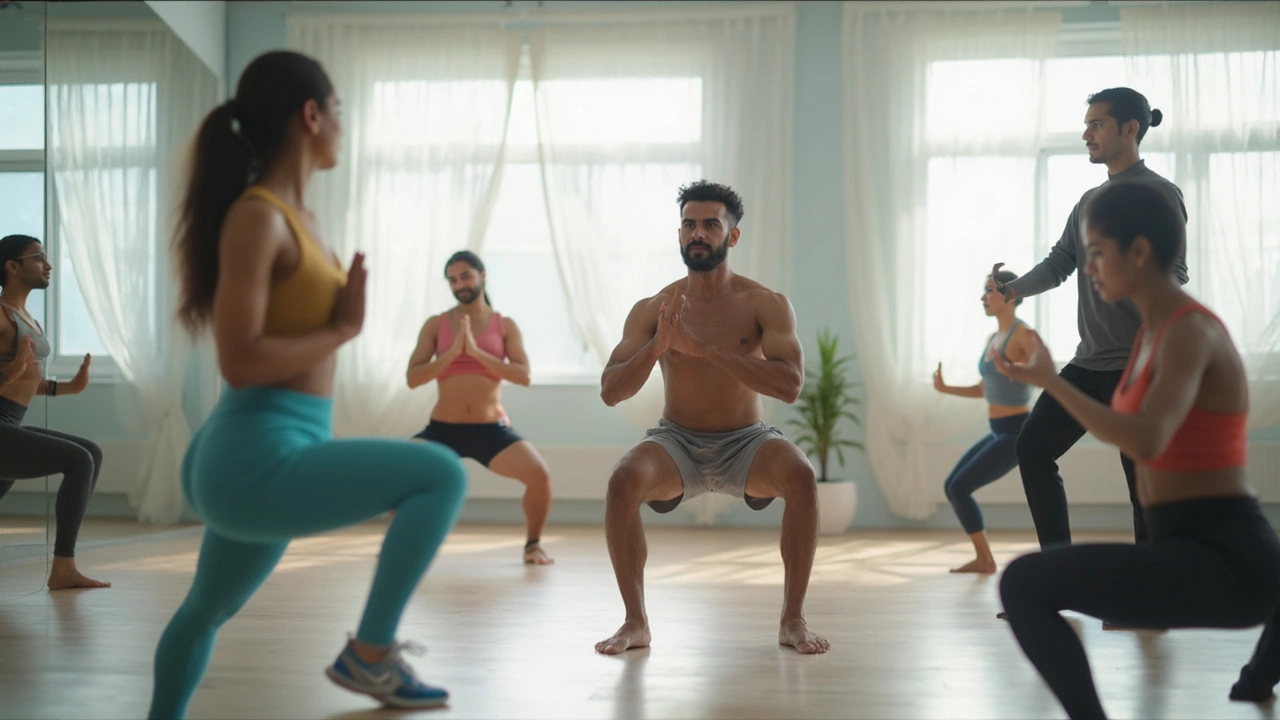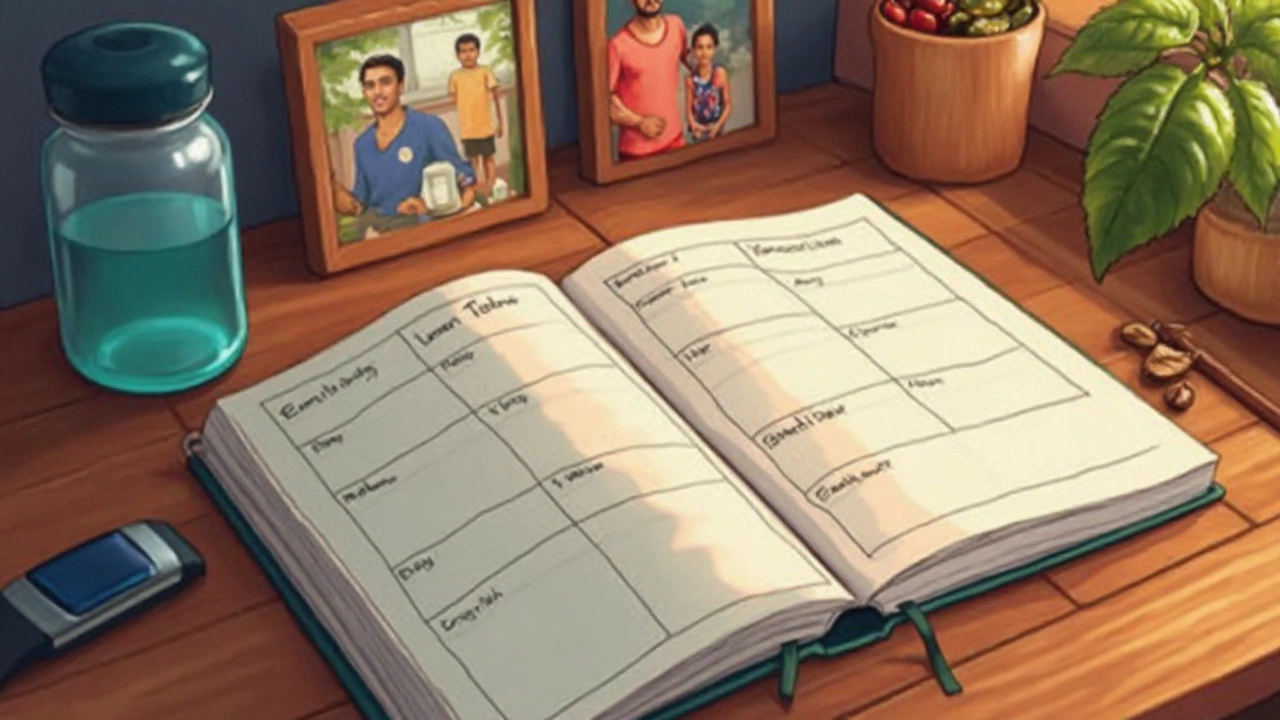Wandering into the gym without a plan is a fast track to wasted time and frustration. If you’ve ever hopped between machines, not sure what to do next, you already know the struggle. But here’s the thing: even a basic game plan will boost your results and cut down your confusion, whether you’re aiming to get fit, build muscle, or just not feel lost around all that equipment.
At its core, a good gym plan is just a schedule that lays out what you’ll do and when. It mixes strength exercises, cardio, and rest days so you’re not overdoing it or burning out. If you can commit to three to four days a week—even just 45 minutes at a time—you’re already ahead of most people. Want a tip that works for everyone, newbies and regulars alike? Stick to big movements first: think squats, push-ups, and rows. These work more muscles at once and deliver faster results for the time you put in.
- Why You Need a Gym Plan
- Key Elements of a Good Routine
- Sample Weekly Gym Plan
- Tracking Progress the Simple Way
- Top Tips for Staying on Track
Why You Need a Gym Plan
Walking into the gym without knowing exactly what you're going to do is like driving without GPS. You might get somewhere, but chances are you'll waste time, get frustrated, and maybe even give up too soon. Here’s why having a gym plan changes everything.
First, plans prevent confusion. Most people quit in the first month because they feel lost or overwhelmed. If you come in with a routine, you cut out decision fatigue. You know what movement comes next, and you can just focus on doing it right.
Plans also help you avoid the classic beginner mistake: working random muscles and ignoring others. When you move from chest machines to biceps to the treadmill with no strategy, you end up with imbalances or plateaus. With a plan, every muscle group gets covered and you recover properly.
And don’t forget about progress. When you track what you do—how many sets, how much weight—you notice those small wins, which is way more motivating than just hoping you’re improving. A good plan gives you proof that you’re getting stronger or fitter week after week.
If you want numbers, here’s what the research says: a 2022 survey found that people using a structured gym plan were 60% more likely to stick with their workouts for over six months, compared to those who just winged it.
| With Plan | Without Plan |
|---|---|
| 60% stick for 6+ months | 23% stick for 6+ months |
So, if consistency is your main headache, a plan is your best friend. Plus, you waste less time in the gym and avoid injury by skipping “random act of fitness” days. More gains, less pain. That’s what a good game plan delivers.
Key Elements of a Good Routine
A solid gym plan isn’t just about throwing random exercises together. If you want real progress, your routine should have a few key parts that cover all the bases—strength, cardio, flexibility, and rest. Here’s what actually matters:
- Balanced Strength Training: You don’t need a thousand moves. Focus on tried-and-true basics like squats, deadlifts, bench presses, rows, and overhead presses. These hit several muscle groups at once, which means more gains in less time.
- Cardio Sessions: A couple of cardio workouts a week boost your heart health and help manage fat. Think treadmill intervals, cycling, or even rowing for 20–30 minutes. Mix it up so you don’t burn out.
- Rest and Recovery: Your muscles grow and repair when you rest, not while you grind. Aim to take at least one or two rest days a week. Also, make sure you sleep 7–9 hours a night—plenty of evidence shows this directly affects muscle recovery and performance.
- Progressive Overload: This is just a fancy way to say "keep pushing yourself." Each week, add a little more weight, do another set, or try a few more reps. Even small improvements add up fast.
- Mobility and Warm-Ups: Five to ten minutes at the start of each workout with stretches or light movements will prep your joints and reduce the risk of injury.
To give you some real numbers, here’s a look at how different routines break down based on goal:
| Goal | Strength Training | Cardio | Rest |
|---|---|---|---|
| Muscle Gain | 3-4 sessions/week | 1-2 sessions/week | 1-2 days/week |
| Fat Loss | 2-3 sessions/week | 3 sessions/week | 1-2 days/week |
| General Fitness | 2-3 sessions/week | 2-3 sessions/week | 1-2 days/week |
It really comes down to consistency. You don’t need fancy moves or hours of training. Just nail these basics week after week, and you’ll see real pay-off. If you’re ever stumped, pick a plan you can actually stick to—success in the gym is more about keeping at it than chasing perfection.

Sample Weekly Gym Plan
No need to overcomplicate things when setting up a gym week. A balanced plan hits every major muscle group, leaves room for recovery, and keeps things interesting so you don’t get bored and quit. Here’s a realistic template that beginner and intermediate lifters can both use. If you’re in a rush, you could even swap days around or skip a session. The idea is consistency, not perfection.
- Day 1: Full Body Strength
Squats (bodyweight or barbell): 3 sets of 8-12 reps
Push-ups or Bench Press: 3 sets of 8-12 reps
Rows (dumbbell or cable): 3 sets of 10-15 reps
Core (planks or crunches): 3 sets of 20-30 seconds or reps - Day 2: Cardio & Mobility
20-30 minutes brisk walking, cycling, or rowing
Finish with 5-10 minutes stretching to avoid stiffness - Day 3: Upper Body
Overhead Press: 3 sets of 8-10 reps
Pull-ups or Lat Pulldowns: 3 sets of as many as possible or 8-12 reps
Bicep Curls: 3 sets of 10-15 reps
Triceps Dips or Pushdowns: 3 sets of 10-15 reps - Day 4: Rest or Active Recovery
This could be a gentle yoga session or just a walk outside. - Day 5: Lower Body
Deadlifts (dumbbell or barbell): 3 sets of 8-10 reps
Lunges: 3 sets of 12 reps per leg
Leg Press or Step-ups: 3 sets of 10-15 reps
Calf Raises: 3 sets of 15-20 reps
If you’re only training three days a week, just rotate through these sessions. You’ll still get the benefits, promise. The trick is to progressively add a bit more—extra weight, an extra set, or a few more reps—every week or two. It keeps your gym plan working as your body adapts. Remember to start each workout with a quick five-minute warm-up and end with some stretching. It makes a huge difference for recovery and injury prevention.
Tracking Progress the Simple Way
If you want results, you’ve got to track what you’re doing at the gym. Not just for bragging rights, but because it keeps you honest and helps you spot what’s working and what isn’t. So many people quit just because they’re not sure if they’re making progress—when actually, tiny wins add up fast!
Don’t overcomplicate things. Skip the fancy apps if that’s not your vibe. All you really need is a notebook or a note-taking app on your phone. Jot down these basics for each workout routine:
- Which exercises you did
- How much weight you used
- How many sets and reps
- How you felt (tired, strong, bored, injured—whatever stands out!)
The magic’s in the consistency. Do this every session, and you’ll see patterns. For example, maybe your bench press hasn’t budged in two weeks—time to mix it up or check your rest and nutrition.
Want a snapshot view? Here’s a super-simple progress table example. Just plug in your real numbers each week and see your effort pay off:
| Week | Squat (kg) | Push-Ups (reps) | Plank (seconds) | Bodyweight (kg) |
|---|---|---|---|---|
| 1 | 40 | 10 | 30 | 75 |
| 2 | 45 | 12 | 40 | 74.5 |
| 3 | 50 | 15 | 45 | 74 |
Photos can be another eye-opener—once a month, snap a clear, full-body shot. Sometimes changes show up there, even when the scale won’t budge. If it’s important to you, include measurements like waist, hips, or arms for tracking stuff that a mirror doesn’t tell you.
The last thing: don’t expect every week to bring jaw-dropping results. Life gets in the way. But the data? That never lies. When you look back after a month or two, you’ll realize you’re way stronger, faster, or have more energy. And that’s what keeps motivation high when the novelty wears off.

Top Tips for Staying on Track
It’s way too easy to let life, tiredness, or just plain boredom derail your gym plan. If you want your workouts to actually stick, you need a couple of tricks up your sleeve. The truth is, studies show almost 50% of people quit their routine within six months. So, what actually keeps people showing up at the gym week after week?
- Pick a time and stick to it. Training first thing in the morning or right after work makes it a habit. Don’t leave it “for later” or it’ll probably never happen.
- Keep your gear packed and ready. If your bag’s by the door, you’re more likely to go—even if motivation’s low.
- Write it down. Logging your workouts (old school notebook or an app) gives a weird sense of satisfaction and helps you actually see progress.
- Mix things up. Boredom kills routines. Swap out an exercise or play with the order every couple of weeks to keep things fresh.
- Find an accountability buddy. If you know a friend’s waiting at the gym, you’re much less likely to bail. Even sharing weekly updates with someone helps.
- Set small milestones. Aiming to deadlift 200 pounds can feel huge, but adding 5 pounds is doable and feels like a win.
Want to see how real this is? Here’s a quick look at what helps people actually stick with their gym plan:
| Tip | Success Rate (%) |
|---|---|
| Workout Logging | 62 |
| Exercise Buddy | 66 |
| Fixed Schedule | 71 |
| Mixing Up Routine | 58 |
Look, nobody is motivated every single day. Building a few of these tips into your routine will help carry you on the days you’d rather do just about anything else. Eventually, what started out feeling like effort just turns into second nature.





